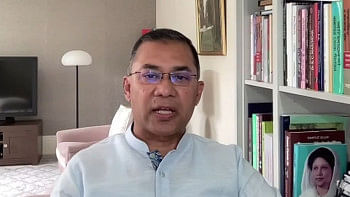Sanchayapatra: The scapegoat of our financial sector problems?

Playing the blame game is one of our oldest rituals. When a crisis strikes it's always easier to lay the blame on someone that appears, only on surface, to be the "bad guy" without admitting to more fundamental causes. Sanchayapatra is just that: the scapegoat of our growing economic and financial sector challenges.
To be sure, economics has long taught us of the benefits of letting supply and demand decide interest rates and Sanchayapatra clearly goes against the spirit of letting markets do the talking. But we all get that this cannot be a universal rule and intervention does indeed have its place in economic literature. Why else would so many countries fix their exchange rates, close capital accounts or need social safety nets?
So then why does Sanchayapatra spark so much criticism? Bankers and experts claim Sanchayapatra lowered growth in bank deposits which drove the ongoing liquidity crisis. Consequently, banks had no choice but to raise deposit rates which obviously pushed up lending rates. Higher lending rates naturally mean lower investments. Facing tighter liquidity conditions, the central bank had to lower Cash Reserve Ratio (CRR) and its policy rate which comes along with the risk of higher inflation.
This chain of events sounds logical in theory except that it leaves out crucial factors that actually led to the liquidity crisis, namely (i) excessive growth in private sector credit; (ii) central bank's intervention to prevent exchange rate depreciation; (iii) borrowers defaulting or delaying repayment of loans; and (iv) concerns over the Farmers Bank fiasco prompting large depositors to remove their money from several private banks.
For much of the last five years, nominal GDP (real GDP plus inflation) grew at around 13-14 percent while credit growth in the private sector hovered around similar levels. So then there could have been no justifiable reason for private credit to suddenly shoot up to 18 percent to generate similar growth last fiscal year.
Most likely, banks lent recklessly to inefficient businesses and dished out tonnes of consumer loans while some of the excess capital was siphoned out of the country. The upshot is that the problem is not about Sanchayapatra but more about (i) banks' risk management and lending policy and (ii) why (and how) people are taking money out of the country.
Meanwhile, excessive credit-fuelled import growth (which obviously includes illicit outflow of funds) plunged our current account into its largest deficit of around USD 10 billion. With so much money flowing out, the central bank injected foreign currency into the interbank market to prevent depreciation of the currency—which means it soaked up even more taka out of the financial system, worsening the liquidity crisis.
Herein lies the need for greater exchange rate flexibility. Sure enough, allowing greater depreciation would have led to more expensive imports and possibly higher inflation. But cheaper currency also means foreign demand for our exports will rise and over time take our balance of trade to a much stronger level (this is called the J-curve effect in economic parlance). Surely, this would have been a better option than lowering policy rates and intervening excessively in the foreign exchange market. Perhaps authorities faced strong resistance against greater depreciation from certain segments of the business community.
The issue of weak bank balance sheets and loan defaults of course is not new, and has been excessively discussed in the media (and everywhere else for that matter), but it remains unaddressed. Banks will continue to blame Sanchayapatra for their misfortunes without fixing their own corporate governance and risk management systems unless authorities come down hard on their malpractices.
The governance factor aside, most banks tend to offer similar deposit schemes and hardly have any targeted savings products for retired individuals, housewives or non-resident Bangladeshis. Small wonder they have trouble attracting funds!
That brings us to another well-publicised allegation against Sanchayapatra: that it hurts development of our stock market. Those of us who have been involved professionally in our country's equity market remain convinced that its problems are far more fundamental than higher yields on savings schemes.
For instance, how will removing Sanchayapatra tackle opportunistic gamblers in our stock market who have eroded public confidence over the years? First and foremost, our stock market needs better quality stocks. When strong multinationals are brought to a market, confidence naturally rises and drives more money into stocks. Simplifying and strengthening regulatory processes and lowering tax rates for listed firms are also necessary to improve the market's condition (see "For a vibrant financial sector", The Daily Star).
Perhaps the biggest complaint surrounding savings schemes is that it is serving the rich more than the poor, while driving up fiscal costs. The problem here revolves around how Sanchayapatra is managed by authorities, not Sanchayapatra itself. Surely, it is not incredibly difficult to maintain a centralised database of people who are buying these schemes along with their annual income, and limit the instrument to only eligible individuals and that too only up to a certain amount. Then the fiscal cost in funding low-income families will not be too high, since they will not be able to invest a big amount anyway.
Maybe there is strong pressure from wealthy and powerful individuals who are heavily invested in these schemes. If that is truly the case, it begs the question: will removing Sanchayapatra stop such powerful lobbyists from finding other means of soaking up money from government coffers? Our public banks' sketchy track record should be a good pointer. One way or the other, our fiscal capacity will always be stretched unless authorities generate the will and strength to fend off such pressure. So at the end of the day, the problem centres around institutional strength, not yield on savings schemes.
That said, more targeted transfers to vulnerable income groups can be an alternative to Sanchayapatra. But given the slow implementation process of most public programmes, it makes more sense to first fully operationalise such a programme before removing Sanchayapatra, not the other way around. But make no mistake, even such programmes will do little to solve fundamental and deep-rooted problems plaguing our financial system. Scapegoating Sanchayapatra will not solve anything.
Sharjil Haque is a doctoral student of economics at the University of North Carolina at Chapel Hill, USA, and former Research Analyst, International Monetary Fund, Washington DC.









Comments